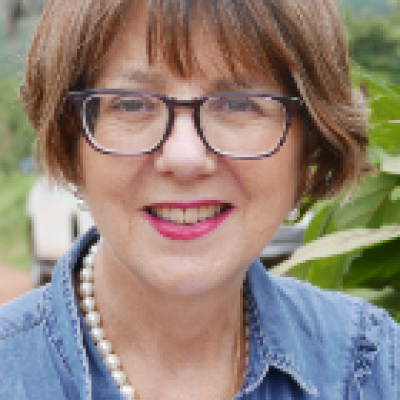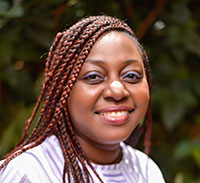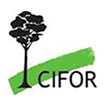
Accessing seeds from towering trees like the African Mahogany (Khaya ivorensis) is crucial to restoring Côte d’Ivoire’s depleted Guinean Forest: they are pivotal to the country’s ambitious restoration goals. However, obtaining their seeds often involves dangerous and damaging practices. Thus, capacitating high tree climbers is essential so that such colossal keystone species have a future.
“Once you get a tree that has no branches up to 10 metres or one with a huge diameter, there is no way you can fix a ladder. It becomes very tricky to get seed,” explains Sebastian Walaita, Africa’s leading expert in high tree climbing. “With the rising global demand for seeds from native and threatened species, the ability to safely and effectively collect these seeds is central to restoration,” adds the Ugandan tree seed procurement specialist.
Typically seed collection in Côte d’Ivoire has been carried out with scant safety standards and equipment, exposing collectors to significant risks. Falls are a constant danger—imagine inadvertently placing your hand on a wasp nest 50 metres up, unsecured, without the protection of a harness and sturdy ropes. Furthermore, artisanal harvesting methods often damage the trees. Cutting large limbs to obtain seeds not only jeopardizes the structure and function of trees but also diminishes their future seed production capacity, undermining long-term restoration potential.

The training ran 2-13 September 2024, and costly equipment was donated. Photo by Gilberte Koffi / CIFOR-ICRAF
In late 2024, the Center for International Forestry Research and World Agroforestry (CIFOR-ICRAF) and Botanic Gardens Conservation International (BGCI) held an 11-day high tree climbing training under the UK Darwin Initiative-funded project Growing threatened trees’ restoration capacity in Cote d’Ivoire’s cocoa landscape. Led by Walaita and fellow Ugandan Paul Obbi, the training marked a pivotal moment in the West African nation’s approach to seed collection.
For the first time, strict safety protocols, professional techniques and global best practices were introduced to protect both climbers and the precious arboreal resources they work with.
“This training decisively shifts seed collection,” said Kouamé Christophe, CIFOR-ICRAF Country Director. He stated that it not only addressed the sometimes dangerous methods of the past but also strengthened local capacities, contributing to the preservation of endangered tree species and the sustainable restoration of forest landscape through responsible and “respectful” seed collection.
Six participants from specialized institutions, including Côte d’Ivoire’s national forest tree seed centre, the Centre de Semences Forestières d’Adzopé, were trained.
Walaita, who was inducted into high tree climbing by the DANIDA Forest Seed Centre in 1997 and has been climbing since, praised a trainee who scaled up to 40 m, adding that “if he practises, he will gain confidence”
Participants found the training both strenuous and rewarding. “Climbing with this heavy gear wasn’t easy,” said 45-year-old trainee Leto Antoine, from Côte d’Ivoire’s agricultural research body (CNRA), proud to have undergone the historic training.
CIFOR-ICRAF’s Koné Ibrahim, 37, said his difficulty had been “maintaining balance”. “But the training helps avoid damaging trees,” he explained. “If we can collect sufficient quality seeds, we can contribute to conservation.”
Other participants had similar experiences. Koffi Yves, 22, from SODEFOR said, “The biggest challenge was moving from branch to branch with the equipment”. Meanwhile, Zoumaro Ismael, 39, a plant technician from the botanic institute IBAAN, admitted he had been apprehensive about descending by rope. “But I did not panic,” Ismael said. “It was a new competence for me.”
Learning secure techniques such as climbing with spurs, tying safety knots and navigating through the canopy boosted participants’ self-belief. FAO’s Guide to Forest Seed Handling states: “With correct use of the safety harness and safety line, the climber should have both hands free to pick the fruits.”

The course drilled the use of harnesses, ropes, carabiners, and other tools. Photo by Gilberte Koffi / CIFOR-ICRAF
Beyond technique: Conservation gains
The implications of this training go beyond the technical skills acquired. Seed collected from tall trees means less collection of wildlings, which Ivorian planting programmes often resort to for rare species.
“Wildlings need to be left to grow where they are,” said Dr Jean Claude N’zi, coordinator of the Darwin project. “We also risk genetic depression if we overuse wildlings since they tend to be from just one or two mother trees.” Similarly a BGCI resource book states: “Care should be taken not to over-collect wildlings as this will impair natural regeneration.”
Many of the threatened species in Divo Botanic Reserve, the focus of the Darwin project, are particularly in need of high tree climbing as they attain great heights: iconic trees such as Entandrophragma angolense (Tiama) can grow up to 50-60 m, Tieghemella heckelii (Makoré) up to 40 m in height and 1.5 m in diameter and Milicia regia (Iroko) up to 35 m with a long, branchless bole.
At the project’s closing forum on 23 October, where the newly minted climbers received their certificates, Kouassi Lucien, Director General of Forests and Fauna in the Ministry of Water and Forests, urged them to share their knowledge.“Pass your skills to others. Create a virtuous circle for the restoration of Ivorian forests,” he said.
Developing much needed “capability”
Alex Hudson, BGCI’s Plant Conservation Project Manager for Africa, emphasised the broader impact of the training. “Improved tree climbing allows seed collection from a wider variety of individuals of a tree species, which is vital for the long-term survival of threatened trees,” he said.
The golden era of building capacity in tree climbing was 1987-2007 during which the Danish Tree Seed Centre assisted circa 15 Southern countries to establish tree seed centres. But as the projects ended, it fell off the agenda. “That is why you find most trained tree climbers are old,” says Walaita.
Asked if he has high tree climbers, Fandey Mashimba, who heads Tanzania’s Directorate of Tree Seed Production and has a particular interest in capturing and managing genetic diversity in threatened tropical trees said, “We have climbers who were trained in the late 80s by the Danes. They are retired now but could teach others.”
The race is on to train new tree climbers as initiatives to grow trees for carbon, biodiversity and other planet-and-people-saving purposes realize that they simply do not have adequate seed, let alone of the quality and great range of species needed.
“Constraints to the availability and quality of tree seed can undermine the success of forest and landscape restoration efforts and the delivery of associated benefits such as mitigating climate change,” said researchers in one paper about this fearsome gap.
CIFOR-ICRAF’s flagship seed project, PATSPO in Ethiopia, plans to train tree climbers, and the high tree climbers in Cote d’Ivoire are raring to go. “I want high-quality seeds from tall species for my nursery,” said CNRA nursery operator, Leto Antoine.
“High tree climbing can be an adrenaline wreck,” said CIFOR-ICRAF’s Sammy Carsan. “Having youths is crucial, especially for these very tall trees.”
Also, said the Kenyan agroforestry specialist who works across myriad countries in Africa and beyond: “Linking climbers to seed dealers and tree nursery operators is vital as it can help address challenges associated with the common practice of collecting fallen fruits that may be infected from the ground, and where you frequently end up with mixed plant quality stock in restoration nurseries.”
Acknowledgement
Running May 2023-October 2024, Growing threatened trees’ restoration capacity in Côte d’Ivoire’s cocoa landscapes was led by CIFOR-ICRAF with partners Botanic Gardens Conservation and the National Floristic Center (CNF) of Félix Houphouët-Boigny University.
We want you to share Forests News content, which is licensed under Creative Commons Attribution-NonCommercial-ShareAlike 4.0 International (CC BY-NC-SA 4.0). This means you are free to redistribute our material for non-commercial purposes. All we ask is that you give Forests News appropriate credit and link to the original Forests News content, indicate if changes were made, and distribute your contributions under the same Creative Commons license. You must notify Forests News if you repost, reprint or reuse our materials by contacting forestsnews@cifor-icraf.org.













